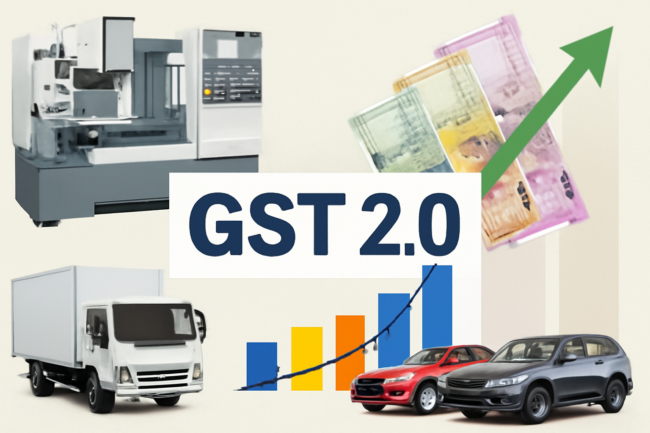
-By Sanjay Chavre, Advisor, TAGMA Times
The Government of India has taken a decisive leap forward with the introduction of GST Reform 2.0, announced after the 56th meeting of the GST Council held in New Delhi on September 3, 2025. Effective September 22, 2025, the restructured Goods and Services Tax (GST) regime seeks to propel the Indian economy by simplifying the tax rate structure, providing relief to consumers, and invigorating industrial sectors including the tooling industry.
Key Features of the Latest GST Overhaul
Sweeping changes characterize GST Reform 2.0, including:
- GST rates on daily essentials dropped to 0%/5%.
- Most goods and services now fall under the streamlined 5% or 18% slabs, with luxury/sin goods at a new 40% bracket.
- A procedural push promises simplified filings and faster refunds, particularly benefiting MSMEs and manufacturers.
- A new Goods and Services Tax Appellate Tribunal (GSTAT) will commence before December 2025.
The government expects these measures to inject at least ₹48,000 crore into the economy, with analysts forecasting a GDP boost of up to 120 basis points over the next 4–6 quarters, driven by enhanced consumer demand and industrial activity.
Impact on the Indian Tooling Industry
While the GST rate for the tooling sector remains at 18%, the indirect benefits of the reform are substantial:
- Mother Sectors Stimulus: Sectors like packaging, aerospace, engineering, and automotive—which depend on tooling—will see increased demand due to lower GST on inputs and transport equipment. GST on cars, buses, trucks, and three-wheelers fell from 28% to 18%, expanding output and, by extension, the demand for tooling products and services.
- Liquidity and Demand: The tax drop on essentials will raise disposable incomes, spurring consumption across the supply chain—including tooling-related products.
- Domestic Sales Opportunity: The confluence of simplified GST compliance and recent trade barriers, such as new U.S. tariffs, is set to strengthen the Indian manufacturing ecosystem. With easier domestic sales processes, tooling turnover is projected to rise by at least ₹500 crore, as smoother compliance and better business sentiment take root.
GST Reforms: Industry and Economic Perspective
Industry leaders have welcomed the GST overhaul, citing its role in boosting ease of doing business, resolving classification disputes, and creating a more predictable tax environment.
The uniform rate for auto parts and reduced rates for critical industries promise to mobilize investments in capital equipment including tooling and machinery while lowering operational friction.
The Appellate Tribunal and digital compliance drive should accelerate refunds and dispute resolution, directly supporting cash flows for tooling manufacturers and end-users alike.
Conclusion
GST Reform 2.0 heralds a watershed for India’s manufacturing and tooling industries. With indirect tax rationalization, procedural simplification, and enhanced market access, the stage is set for a new consumption and investment cycle. As “mother industries” scale up production under the new GST regime, India’s tooling sector is well-positioned to benefit through higher orders, improved compliance ease, and robust domestic demand.

About the Author:
Sanjay Chavre, Advisor – TAGMA India
A respected technocrat and policy strategist, Mr. Sanjay Chavre has been a pivotal figure in the evolution of India’s manufacturing and tooling ecosystem. With decades of experience at the intersection of government and industry, he has contributed to the development of forward-looking policies that promote indigenous technology, strengthen domestic capabilities, and uplift MSMEs within the tooling and precision engineering sectors.
Mr. Chavre has held key roles in various government departments and has been instrumental in formulating and executing initiatives that align with India’s long-term vision for industrial growth and self-reliance. His expertise lies in enabling public-private collaboration, fostering innovation ecosystems, and building frameworks that support sustainable industrial development.
In his current role as Advisor to TAGMA India, he continues to guide efforts aimed at enhancing the global competitiveness of Indian toolmakers. His insights have been vital in positioning the Indian tooling industry as a reliable and technologically advanced partner in the global supply chain




COMMENTS